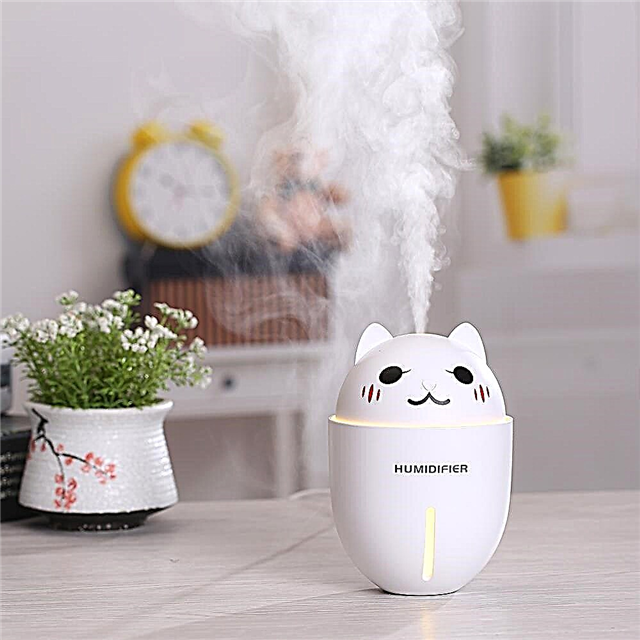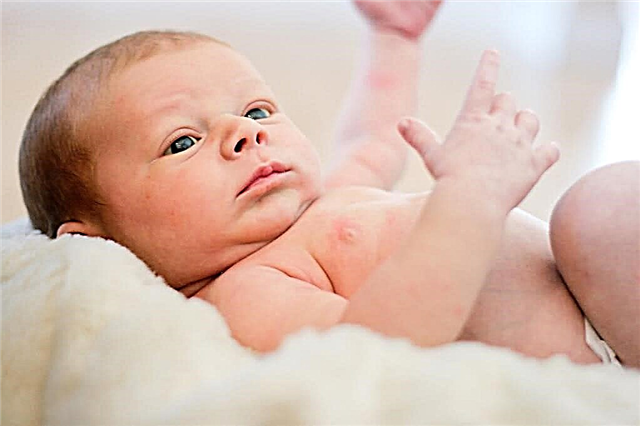
As a rule, little is known about cryopreservation of embryos in ordinary couples. This concept is faced by those who are going to do in vitro fertilization. There are many controversies surrounding the freezing of embryos, including religious and moral-ethical ones. But sometimes you can't do without cryoembryos. In this article, we will describe in detail what is embryo cryopreservation and why it is done.
What it is?
The prospect of in vitro fertilization is faced by couples who cannot conceive a child naturally and who cannot eliminate the causes of infertility by other methods. During the procedure, the biological materials of the partners are taken - sperm and an egg. Fertilization does not take place in the mother's body, but in the "test tube". After this, a fertilized egg is implanted into the woman's uterine cavity. If the blastocyst is successfully implanted from the wall of the uterus, then they talk about the onset of pregnancy.

IVF without hormonal stimulation is rarely done due to the low chance of successful implantation. Usually couples undergo IVF with hormonal support. During preparation, under the influence of hormones in the ovaries of a woman, not one or not two eggs mature, but a much larger number of them. The eggs obtained by the puncture are fertilized with the sperm of the husband or donor (if the cause of infertility is total male infertility).
The more eggs are obtained, the greater the chances of success. The more oocytes are successfully fertilized by male reproductive cells, the more opportunities the reproductive physician will have - he can choose only the strongest and strongest embryos for replanting from the uterine cavity.
Usually they try to plant 2-3 eggs. The question arises: what to do with the remaining embryos? Most often, with the consent of the couple, they are cryopreserved. If the first IVF attempt fails, then these embryos can be used for a second attempt.
In addition, a couple, after a successful IVF attempt, may well want another child in a few years. Then she, too, will be able to use the frozen embryos. Then the woman does not need long-term preparation for IVF - cryotransfer will be done within the framework of the cryoprotocol.
How does this happen?
Usually, they try to freeze the embryo at the zygote stage, when they are a two-year, four-celled or eight-celled organism. Cryopreservation, by the way, can be carried out at almost any stage of the early development of a fertilized egg. The reproductive specialist carefully evaluates the quality of embryos - defective, weak ones may not survive freezing and defrosting.

There are two main ways to preserve life in the embryo by temporarily stopping all cellular processes. In the first case, embryos are frozen slowly and immersed in a cryoprotectant solution with certain drugs. The cells surrounded by such a composition are more protected, and the liquid inside the cells does not crystallize during freezing, does not turn into ice and does not break the cell membrane, which becomes vitreous. This allows all of its structures to remain viable.


The second method is called vetrification. This is a fast, rapid freezing, in which the crystallization stage does not go through the laws of physics. Cooling is done with liquid nitrogen or its vapor. Frozen embryos are stored at minus 196 degrees Celsius in special tubular containers. They can be stored for up to 10 years.

If it is necessary to use embryos, they are removed from nitrogen, thawed at room temperature, and then placed in a special nutrient medium. After the doctor is convinced that the embryos are alive and the process of cell division has resumed, they can be transferred.
Statistics say that about 20% of embryos, unfortunately, die when thawed. At the same time, after ultrafast freezing by the method of vetrification, the survival rate is higher - it is more than 80%, and with slow freezing with a replaceable cryoprotective solution, the survival rate of embryos is estimated at about 50%.
Pros and cons
Cryopreservation of embryos "in reserve" allows the couple to increase the chances of success in IVF. If in one protocol it was not possible to become pregnant, you can do the second. After unsuccessful IVF with naive (only received, fresh) embryos, the cryo-embryo protocol very often gives a quick positive result.

If the first IVF was unsuccessful (and this is a fairly likely outcome of events), in preparation for the second protocol, aggressive hormonal stimulation of the woman's ovaries will not be needed, which means that the harmful effect on her body will be minimized.
With cryo-embryos, IVF can also be performed in the natural cycle, if the woman does not have an irregular menstrual cycle.
The presence of frozen embryos in the cryobank significantly reduces the cost of subsequent IVF attempts for spouses. And besides, it gives them the opportunity to use the right to transfer them to the mother's uterus even after a few years. Frozen embryos can be used for surrogacy if the biological mother is contraindicated for a number of reasons to carry a pregnancy or does not have such an opportunity (age over 45, absence of a uterus, total dystrophic changes in the reproductive system, previous oncological diseases).

A married couple, whose IVF is successful in one of the attempts, have the right to decide for themselves the fate of the embryos remaining in the freezing, whose biological parents they are. They can pay for their storage for several years in advance, donate them to other infertile couples, and also allow science to use them for study and experiments, or allow their disposal.
From this point on, the cons begin. The decision to dispose of embryos is not an easy one for many couples. Some religions (for example, Orthodoxy) consider this a great sin - infanticide, abortion.
That is why the couple needs to discuss in advance with the doctor the possibility of fertilizing a small number of eggs so that they are used to the maximum for their intended purpose.
If there is a high probability of pathologies in the development of embryos, it is better to agree to the procedure for cryopreservation of oocytes and fertilize the thawed oocytes every time before replanting. But in financial terms, it costs much more.

The death of frozen embryos during thawing is also a clear minus of the cryoprotocol. It may turn out that out of three thawed embryos, only one or none at all will survive, and then the replanting will have to be postponed to a later date.
Indications
Any couple can consciously choose the cryopreservation of embryos at their own will. Such services are provided by clinics specializing in IVF. But there are situations in which freezing of fertilized eggs is strongly recommended by doctors to doctors.

This happens in the following situations:
- participation in the surrogacy program;
- several unsuccessful attempts at IVF using "fresh" embryos;
- when stimulating the ovaries, the woman showed hyperstimulation syndrome and re-stimulation is contraindicated;
- changed circumstances (the couple passed the biomaterial, but for some reason decided to get pregnant a little later, at a more suitable time for this);
- individual history of a woman, if it contains diseases that significantly reduce the likelihood of pregnancy after the transfer, (for example, chronic ailments), which may worsen before the procedure; frozen embryos in this case can "wait" for the expectant mother to recover and heal in order to increase the chances of success.

How does freezing affect the embryo?
Many parents-to-be, pondering the doctor's proposal for cryopreservation of embryos, worry that the process of freezing and thawing will harm the child and will affect his development and health in the future.
On this issue, over 40 years of observation, doctors have come to a unanimous opinion - being in suspended animation in a frozen state does not affect the further development of the baby. There is no need to be afraid of deformities, pathologies, developmental disorders. Freezing and subsequent defrosting are dangerous only in themselves, since the embryo may not survive them. If the thawed cells break up, then nothing will happen to the child who grows out of them.

Some doctors even claim that cryo-babies are stronger, they have stronger immunity, and they get sick less often. It is difficult to say whether this is related to cryopreservation, because initially there are no weak and painful embryos suitable for vitrification. The development of such babies meets all age norms, and sometimes even outstrips them.
The replanting of a thawed embryo can take place on the same day if the embryo has been frozen (cryopreserved) in the cleavage stage (2, 4, 8 cells). If the freezing was carried out at the stage of two pronuclei, then doctors will need a few more days to observe the development of embryos.

The success of replanting in the cryoprotocol
The use of frozen embryos does not reduce the likelihood of implantation and pregnancy. Therefore, as with other types of IVF protocols, the likelihood of pregnancy after cryotransfer is about 30%. Much depends on how the spouses managed to prepare for the protocol. If they have all the tests normal, if there are no reasons that can negatively affect the implantation process after replanting, the probability increases.
The age of the expectant mother also plays a role: after 35 years, the probability of getting pregnant is about 25%, and at 40 years of age, the probability of a successful protocol decreases to 18%. The older the woman, the less likely she is to become pregnant.

The likelihood of becoming pregnant decreases after an infectious disease, influenza and ARVI infection, as well as after a previous miscarriage or a frozen pregnancy. After illnesses and complications, it is important to wait for the time recommended by the doctor so that the woman's body has time to recover.
Re-freezing
Sometimes it is necessary to re-freeze already thawed embryos. This can happen if all the thawed embryos were alive, if the woman was unable to appear for the transplant (emergency, unforeseen circumstances).

In theory and practice, re-freezing of already thawed embryos is possible. But there is an important condition - the primary freezing should have been carried out at the earliest stages of embryo development. After repeated thawing, the probability of death of such embryos is higher. The success of the protocol using twice thawed and frozen embryos does not exceed 10%.
That is why you should not take the risk and freeze the embryos again if there is even the slightest opportunity to transplant in the planned time.
For what cryopreservation is and why it is needed, see the next video.



